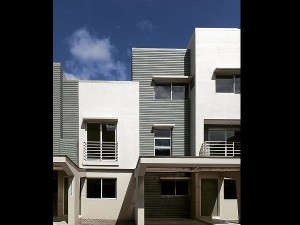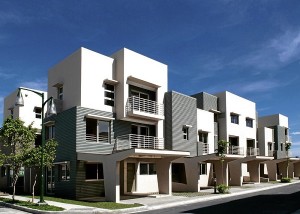
ARTICULATIONS like groove lines, cantilevered ledges and recessed openings add play and flair to the simplicity of a cubiform structure.
It is not a design movement. Instead, the cubiform is a design device used to convey order, simplicity and modernity in architectural forms. In the field of visual arts, cubism grew to be very much part of the modern movement of the 20th century: think Picasso and Braque.
While cubism was the first attempt at abstraction in the visual arts, cubiforms were the first departure from the classical forms in architecture. Think Mies van der Rohe and Walter Gropius. While cubism still influences many of today’s artists, so do cubiforms find their way into today’s architectural expressions.
While there are many articulations that can be associated with modern design, near-cubed or cubed forms are probably the most common because of their simplicity and purity. They convey angularity in forms and planes that are understated, elegant and easy to understand.
Simpler to construct
One of the advantages of working with cubiforms is the ease at which they may be constructed. Because they are, in both plane and elevation, made from lines and planes that intersect at perfect 90 degrees, they are much easier to lay out, and consequently, simpler to construct. Even locations of openings like doors and windows usually fall into some sort of grid.
But cubiforms need not necessarily follow their grid all the time. Some cubiform structures play with their set-out grids, having two or more askew, producing volumes that seem to twist within each other and produce some visual movement. These volumes are quite the opposite to a cubiform set on a single grid that appears more static.
In a more extreme adaptation, the grids on which the structures are positioned do not twist against an x and y axis on the ground, but rather, on a grid that is laid diagonally or vertically. Quite a trick for the eye—and a challenge for whoever will have to produce its construction drawings. This concept can be likened to a 3D version of a cubist’s two-dimensional artwork, ingeniously using skewered volumes to create some very dynamic structures out of the seemingly boring square.

VARIOUS proportions of cubiforms are repeated at different planes along this row of townhouses at Ametta Place in Pasig.
Structural techniques can be introduced to create dynamism to the assembly of block volumes: exaggerated cantilevers, wide overhangs, floating volumes—all convey some sense of magic because they seem to go beyond visual physics. They allow cubiforms to close, or open up, to hang above your head, to reach beyond your space and create experiences that go beyond—and seem to have been thought of—the box.
Roofs over cubiform structures are usually flat slabs that are unseen, or are mildly sloped roofs inset into the walls (known as “parapets”) of the structures. Because of its modest volume, a single sloped roof panel brings out the best character of a cubiform structure wherein walls should be the prominent feature, and the roofs take a step back as a secondary, unedifying, element.
Gabled roofs don’t work very well with squared structures, especially when they have cantilevered eaves that could convey quite powerfully a tropical character. However, when used discreetly and scaled appropriately, gabled roofs can break the monotony of the cube.
Adding flair to simplicity
These days, the use of cubiform concepts for row houses have become quite popular. Because of its simplicity, a modern cubiform structure can make a small volume appear to be bigger in scale. When its forms are repeated along a row of structures, it can create some very powerful yet straightforward, shadow play.
Articulations like groove lines, cantilevered volumes and recessed openings add flair to the simplicity. The concept of cubiforms are well exploited in smaller architectural projects where the forms of the structures can be made to look more spirited.
Modern artists still apply cubism to their visual arts in ways that express new concepts, much the same way that the cubiforms may be enjoying a resurging popularity but have grown into the architectural language of this new generation.

